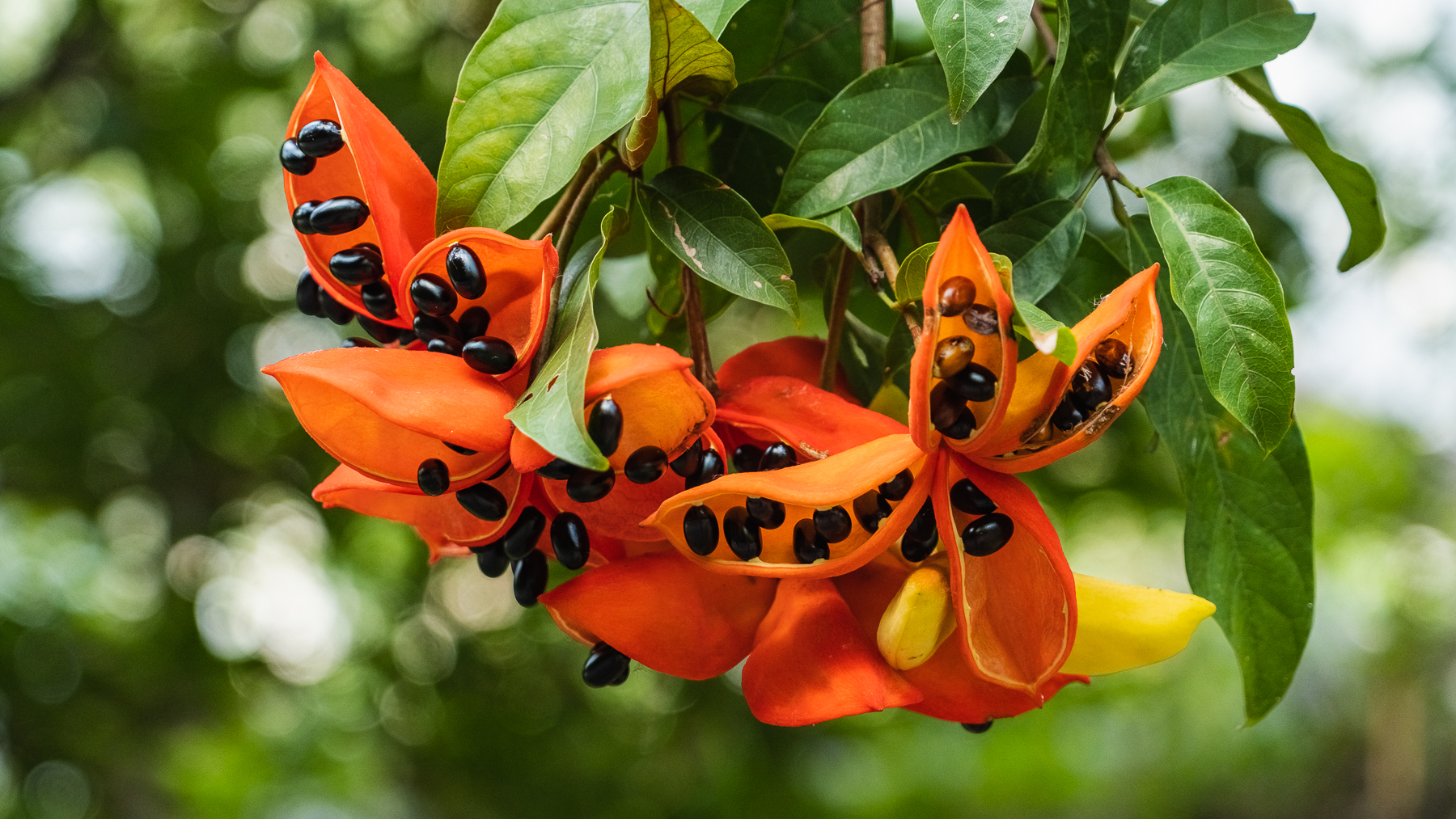

In the past, an extensive number of Acacia trees had been planted on the roadside slope at Yuen Chau Kok, Sha Tin. When the Acacia trees reach senescent stage, they are posing a safety risk for vehicle drivers and those on the cycling track. After removing these Acacia trees, the Highways Department replanted various tree species like Sterculia lanceolata and Viburnum odoratissimum and shrubs like Lantana montevidensis and Duranta erecta, to increase biodiversity and plant species.
Sterculia lanceolata (Scarlet Sterculia) is a native evergreen tree and can be found in a lot of parks in Hong Kong. It has small star-shaped clusters of crimson flowers blossoms from April to May. During August to September, bright orange star-shaped fruits dangling from the tree are very distinctive and can be easily spotted amongst the green foliage. When ripen, the fruit changes from yellow to bright orange and the bursting with small dark blackish brown elliptical seeds, attracting wild birds for food and shelter.
As its Chinese name “Fake Sterculia (假蘋婆)” implies, there must be a real Sterculia. That is Sterculia monosperma Vent., also classified under the genus Sterculia. It is commonly known as Common Sterculia and Noble Bottle-tree in English, or “Phoenix-eye Fruit (鳳眼果)” and “Seven-Sisters Fruit (七姐果)” in Chinese. Its seeds are edible after being steamed, taste like chestnuts, and are sold in wet-market near the Seven Sisters Festival. The main differences between the two are that the leaves of Common Sterculia are relatively larger, the follicles are often twin-united, with larger seeds. Conversely, the leaves of Lance-leaved Sterculia is relatively smaller, with follicles that are often five-united, with smaller seeds.